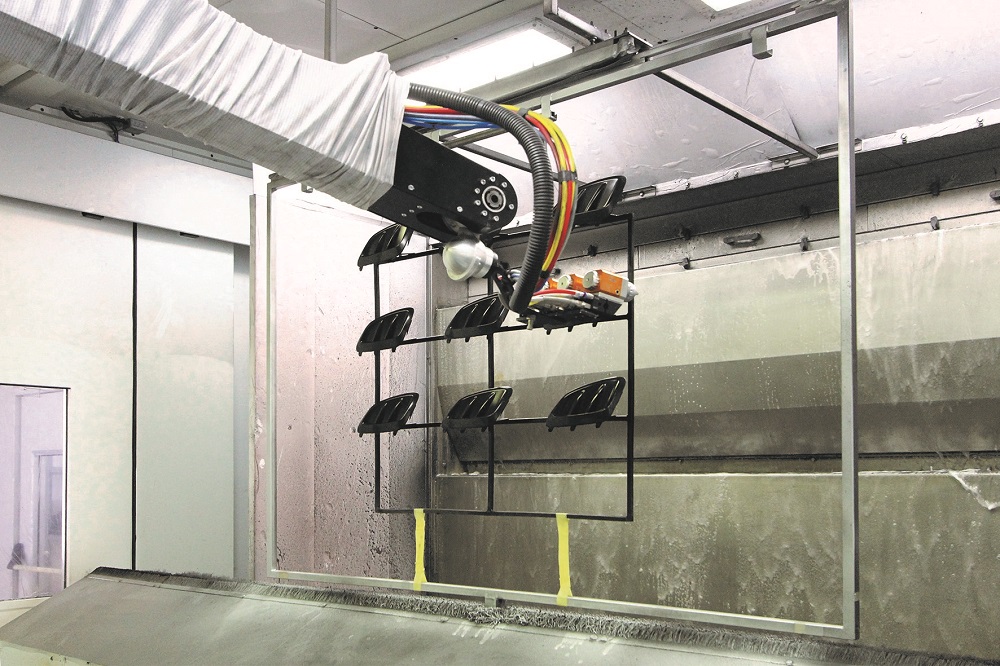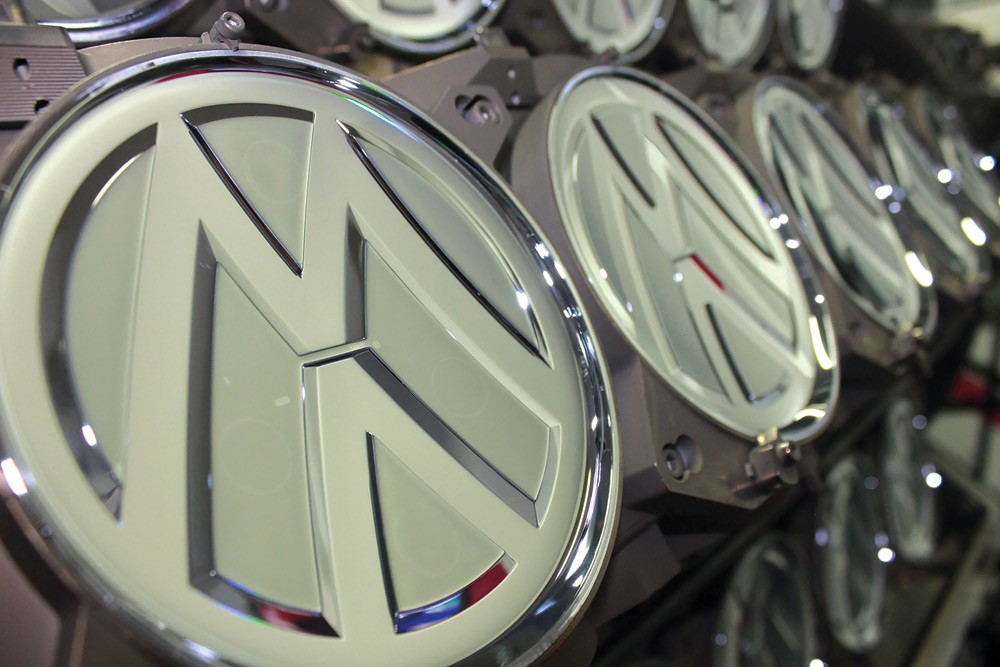In the automotive industry, the use of plastics is becoming more and more common as it improves the functionality of vehicles while enabling to apply more attractive and refined finishes. In this article, we explore why plastic materials are increasingly being used in the automotive sector, why they are painted, and what steps are included in their coating cycle.
The main target market for coated plastic components is the automotive sector. In recent years, this industry has witnessed an exponential increase in the use of plastics in vehicle manufacturing processes due to the several improvements and benefits brought by these materials – more on this in a while.
Today, it is estimated that around 25% of a vehicle is made of coated plastics and that this percentage is set to grow in the near future. There are many reasons why plastic materials are increasingly being used in the production process of various components for both the interiors and exteriors of passenger compartments. First of all, using plastics reduces the weight of a vehicle: given the larger and larger size of cars and their increasingly complex configurations, employing such a lightweight material helps reduce their total weight. In fact, without plastic components, today’s vehicles would be 180 to 300 kg heavier than they are. Weight reduction is therefore an issue of great relevance and the subject of several engineering studies, especially because reducing the mass of a car means limiting fuel consumption and therefore CO2
emissions. In addition, plastics play a very important role in the manufacture of electric cars, where lightweight materials are required to provide excellent long-term performance and improve vehicle efficiency and safety.
Plastic components are also employed to reduce the use of other materials: for example, glass can be replaced with polycarbonate to make windscreens and windows with better functionality, durability, and impact resistance characteristics. In some cases, even metal can be replaced with plastics for greater corrosion resistance.
In terms of comfort, plastic materials improve the aesthetics of car interiors, reduce noise and vibrations, and increase the passenger compartments’ acoustic insulation.
Finally, in such a constantly evolving and trend-conscious sector as the automotive industry, plastics lend themselves to more complex projects, thanks to the precision degree that can be achieved by combining material compatibility with injection moulding.
Why is plastic coated?
Until the 1970s, plastics were not coated because they were not subject to corrosion. The first attempts to apply a paint product to plastic involved some after-market automotive parts and exterior body parts. Then, gradually, the habit of coating plastic components spread to other fields such as motorbikes, household appliances, road vehicles, and fashion accessories.
The reasons why plastics are coated include both aesthetic and functional aspects. On the one hand, applying paint on this type of substrate improves its mechanical properties, ageing resistance, and coupling capability with other materials. Indeed, especially in the automotive industry, there is often a need to couple metal components with plastic parts, and these must have the same surface appearance and colour to meet the highest quality standards. Coating plastic components, therefore, reduces several possible problems in terms of coupling this material with others, such as metal.
Finally, as far as aesthetics is concerned, applying a paint product to a plastic material allows achieving effects that cannot be obtained with other colouring techniques during moulding, including special finishes or tactile effects.
The coating cycle of plastic components for the automotive sector
Although plastics are used in various industrial sectors, the main target market for coated plastics is the automotive industry. A vehicle includes many more painted plastic parts than one might imagine, from its exteriors, often in the body’s colour or in a contrasting tint, to its lights, air vents, grilles, and spoilers, up to interior components such as buttons and anchorages.
Before subjecting a plastic component to coating, however, its surface must be prepared for treatment, first by applying any necessary masking devices and then performing a manual cleaning phase, either with a cloth and alcohol or with CO2 or snow-jet technology
to remove any residual contaminants left by previous processing steps. Polypropylene parts also require a flame hardening process to make their surfaces conductive. After surface preparation, the plastic substrate is ready to be coated. The most common coating systems applied on plastics are composed as follows:
- one coat;
- base coat, top coat, and clear coat;
- base coat and finish;
- baked primer and finish;
- baked primer, base coat, and clear coat.
The coating process ends with oven polymerisation.
 The paint application phase. © ipcm®
The paint application phase. © ipcm®PVD treatments for the automotive sector
As highlighted in the previous paragraphs, the automotive sector has been pursuing environmental sustainability by adopting functional materials that reduce fuel consumption and CO2
footprint, such as plastics. Another technology increasingly used in the automotive industry that combines sustainability, quality, and aesthetics is PVD, which stands for Physical Vapour Deposition.
This process deposits a thin metal film in the order of a few microns, which gives the substrate protection against corrosion, scratching, and abrasion, and resistance to UV rays and solvents. In addition to these protective and functional properties, the PVD process can also be used to deposit decorative films. In terms of cosmetic applications, PVD is a viable alternative to chrome plating, which is based on chromium trioxide or hexavalent chromium, a chemical compound that has recently been banned by the European Union due to its potentially dangerous and harmful effects on humans.
The automotive industry is pioneering the use of this technology, which is employed for coating not only high-quality parts for car interiors, but also for external components such as alloy wheels, where PVD can replace the application of coloured base coats.
PVD also offers a possible solution to two issues of great interest to the automotive sector: lightweight construction, which involves lightening all car components, and electric mobility, which calls for a suitable range of colours to symbolise electric propulsion (greens and blues). In fact, as it forms a thin film available in a wide range of colours, PVD contributes to the lightweighting of cars while meeting the growing demand for a wide range of different finishes.
 PVD coated automotive radomes. © ipcm®
PVD coated automotive radomes. © ipcm®To stay up-to-date with innovations and trends in the automotive industry, subscribe for free to our ipcm_International Paint&Coating Magazine.